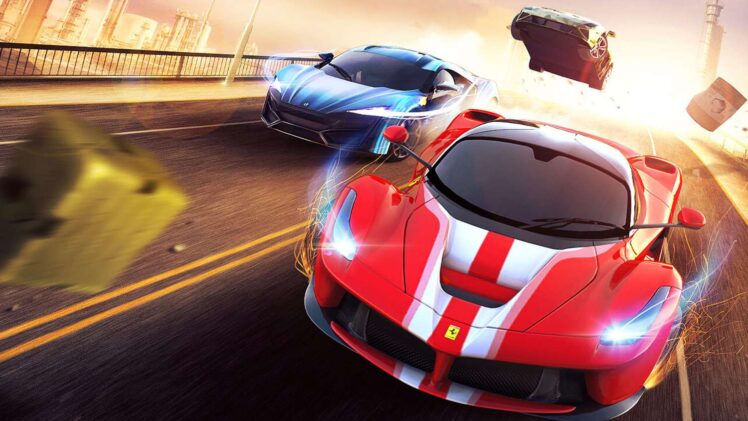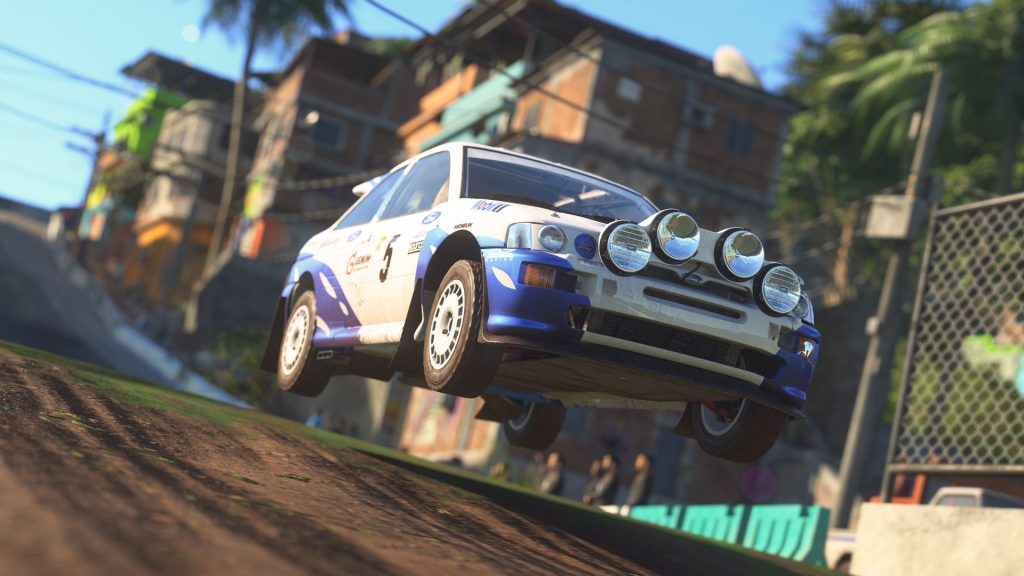Revving Up the Fun: The Evolution and Impact of Car Games on Modern Gaming Culture

For generations, car games have been an integral part of gaming culture. From the first-generation console classics to the latest virtual reality racers and simulations, these adrenaline-pumping adventures have captivated players of all ages.
But what is it about car games that makes them so popular? In this article, we will explore how they evolved and their impact on modern gaming culture. Well, take a look at technological advances, genre innovations, and the global reach of some of these iconic titles.
So buckle up – youre in for a wild ride!
From the Road to the Console: The History of Car Games

Source: gameranx.com
Since its inception, car games have always been a cornerstone of gaming culture. From simple racing simulations on computers and consoles to complex multiplayer experiences online, they are a staple of modern-day gaming.
But where did it all begin? The history of car games dates back almost as far as video game technology itself. An early example is Atari’s Gran Trak 10 from 1974; this was one of the first racing titles for an arcade cabinet.
At that time players had limited interaction with their cars – so much so that if you drove off-road or crashed into other objects you would be immediately reset onto the track! This title set many precedents for future entries in the genre, including its use of a steering wheel (the very first example ever used for any video game). In 1978 Night Driver was released by Atari and boasted features such as going faster than your opponents and driving around obstacles at night (hence the name!).
Eventually, these two titles found success on home systems like Mattel Intellivision console with titles such as Auto Racing (1980) and Indy 500 (1981). In 1984 Sega released Hang On which popularised a new concept – riding on an actual motorcycle while navigating a 3D circuit track! This led to more advanced graphics being seen in car games until we eventually got fully three-dimensional environments simulating real-world physics like those seen in Taitos classic Race Drivin from 1990. It wasn\’t until 1996 when Sony launched Gran Turismo that realistic racing came about; this series revolutionized what people expected from vehicle simulations thanks to its immersive visuals and detailed control options – something still present today across all platforms.
Car Games continue to evolve even now; mobile devices offer new opportunities for developers who want to implement innovative ideas into existing franchises or create entirely fresh concepts tailored specifically towards touch screen devices. Whether it’s revving up our engines or crashing through walls after jumping rooftops, these amazing experiences show us why car games remain some of the most beloved genres amongst gamers worldwide – no matter how fast they may go!
Racing Toward Innovation: How Car Games Have Evolved Over Time
The evolution of car games has had a lasting impact on modern gaming culture. From the earliest days of arcade classics such as Pole Position to today\’s immersive driving simulations, car games have become increasingly sophisticated over time.
As technology advances and developers continue to push the boundaries, racing games are becoming ever more realistic. With improved graphics and sound effects, players can now experience an almost lifelike level of immersion in their favorite game titles.
At the same time, gameplay features have also changed significantly since the early days of two-dimensional track designs that were limited by technology constraints. Today racers feature complex open-world maps with detailed environments and dynamic weather systems that bring realism to every race – from night races under city lights to rally stages through rugged terrain or drifting around tight corners in a rainstorm.
Players can customize cars with various upgrades for better performance or change paint jobs for personalization options – allowing them truly make it their ride. The introduction of online multiplayer components has also revolutionized how people play racing video games; challenging friends from across the globe in real-time competitions brings a new level of intensity and excitement to any race session.
The eSports scene is thriving thanks to this competitive aspect; tournaments draw thousands of viewers each year who compete both virtually and physically at events worldwide while fans cheer them on from home screens all over the world! It’s clear that car games have come a long way since their humble beginnings decades ago – but there is still plenty ahead for driving game enthusiasts as developers continue refining these popular titles with increasingly realistic physics engines and captivating visuals that provide an exhilarating experience like no other genre can offer!
Pedal to the Metal, Minds Engaged: Exploring the Impact of Car Games on Modern Gaming Culture

Source: www.pcmag.com
For centuries, cars have been a significant part of our culture and our lives. We rely on them to get us from point A to point B and they’re often the centerpiece of many memorable experiences.
With the emergence of modern gaming technology, car games have become increasingly popular among gamers who are looking for an adrenaline-filled interactive experience. Pedal to the metal and minds engaged, explore how these car games have revolutionized modern gaming culture by providing an immersive world with high-speed thrills that can be enjoyed in the comfort of your own home.
From vintage classics like Pole Position to more advanced titles such as Gran Turismo Sport, car racing games have come a long way in terms of graphics and gameplay mechanics since their inception in the late 1970s. These new advances allow players to go beyond simply steering their vehicles around winding tracks; instead, they can customize every aspect from engine performance to aesthetics creating a personalized driving experience tailored directly for them.
This level of control combined with realistic physics has created an environment where gamers don’t just play car games but live them out as if they were inside one themselves! The intense competition that comes with virtual racing also plays its part in creating this immersive atmosphere as racers battle it out for first place against AI opponents or even human challengers online across multiple platforms including PC, Xbox One, and PlayStation 4 just to name a few. Captivating storylines further add depth by allowing players to take on roles such as professional drivers or street racers while trying complete missions that lead up towards unlocking rewards at each stage along their journey increasing replay value exponentially over time! Car Games are not only making waves within gaming circles but also throughout other cultural institutions such as art galleries which use virtual reality headsets (VR) coupled with motion simulators placing users directly into various scenarios within different race tracks all over the globe enabling people everywhere access some truly unique experiences right in front of their eyes without ever leaving home! VR tech is taking things even further now allowing users full control over 3D models giving game developers unprecedented levels of content creation potential leading to greater heights than what was previously possible before! As we look ahead into future generations it\’s clear there will be no shortage of excitement when it comes to Car Games thanks to advancements made possible through the continued development and cutting-edge technologies paving the way for many amazing possibilities that await avid fans alike.
Going Beyond Motors and Motifs: Analyzing How Car Game Mechanics Influence Other Genres
The development of car games has had a tremendous impact on modern gaming culture, as it has allowed players to experience the thrill and excitement of driving without leaving their homes. However, this evolution can be extended beyond simply motors and motifs.
By analyzing how car game mechanics influence other genres, we can see the far-reaching implications they have had on gaming in general. For example, racing games are known for their emphasis on speed and agility; however, these same principles have been applied to action and adventure games alike.
Games like Grand Theft Auto feature cars prominently in missions as a means of transportation or escape from law enforcement. These elements add an extra layer of excitement to the gameplay by introducing new strategies for completing objectives or evading capture.
Furthermore, puzzle games often incorporate vehicle movement into difficult situations requiring creative solutions—such as navigating around obstacles or manipulating objects with vehicles—to progress through levels. Car games have also impacted sports video game titles such as NBA 2K20 or FIFA 21 by creating realistic physics engines that simulate real-world motion more accurately than before. This allows developers to create immersive experiences within virtual sports stadiums featuring detailed graphics that were once impossible due to hardware limitations in earlier consoles generations ago.
Ultimately, while car games may consist only of motors and motifs at face value — upon further analysis it becomes clear why they remain popular today: because they bring an innovative level of depth and complexity when applied across various genres which ultimately leads us to appreciate them even more!
Conclusion

Source: gamefabrique.com
Car games have had a tremendous impact on modern gaming culture. From classic arcade racing to open-world driving adventures, they have provided entertainment and immersive experiences that still draw people in today.
Car games allow players to get behind the wheel of their favorite vehicles and put the pedal to the metal in pursuit of fun and glory. Through their evolution, car games have become increasingly realistic as technology has advanced, making them more enjoyable for gamers everywhere.
The influence of car games can be seen in nearly every genre, from sports simulators to shooters and beyond – proving that no matter what kind of game you play, cars will always rev up the fun!





